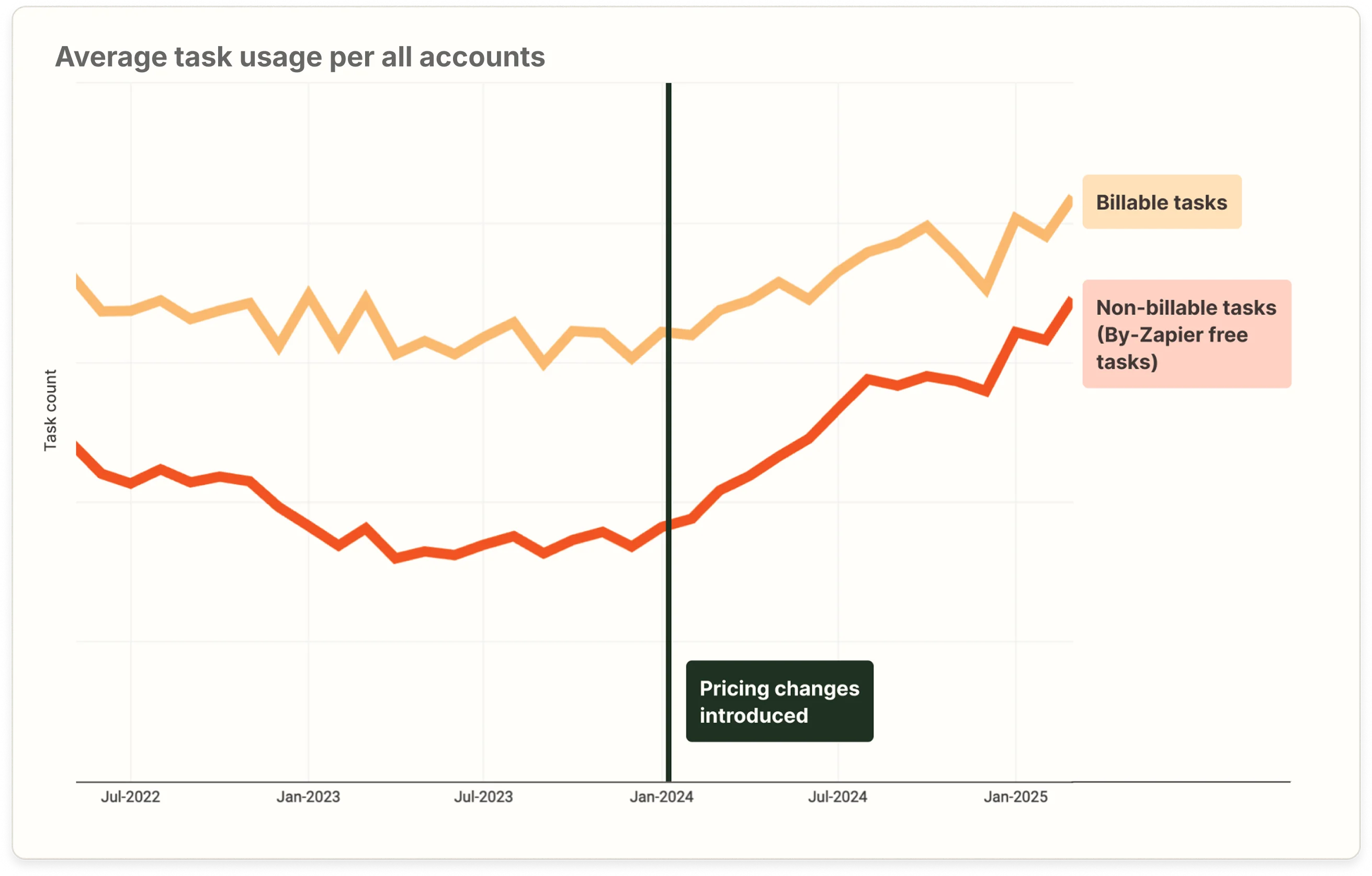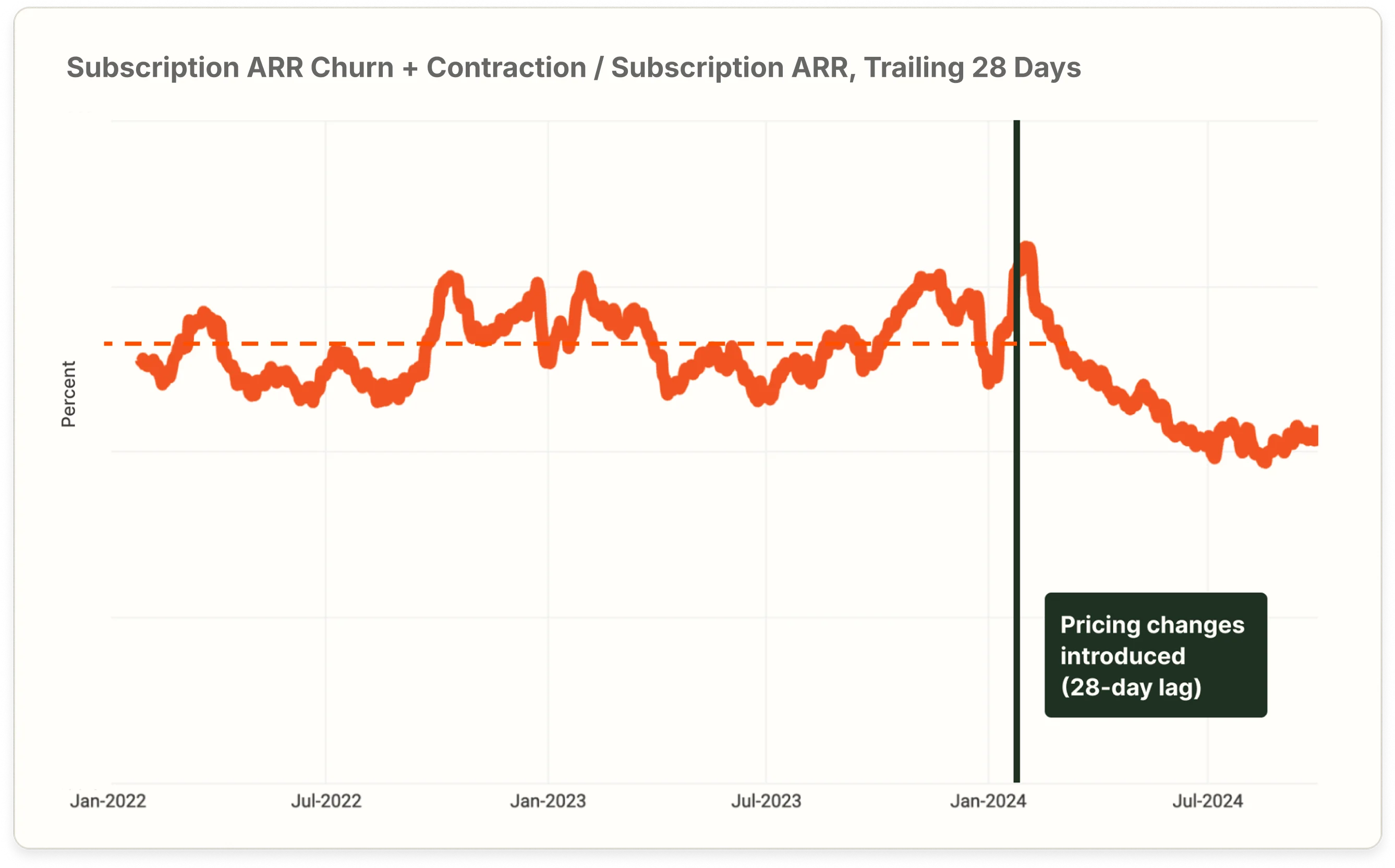When Zapier Walked Away From 'Winning' And Won Bigger
The untold story of how Zapier's CEO deliberately walked away from proven revenue tactics to pursue the one metric that wasn't on any dashboard: customer trust.

The untold story of how Zapier's CEO deliberately walked away from proven revenue tactics to pursue the one metric that wasn't on any dashboard: customer trust.

Zapier, founded in 2011, was designed to help non-technical users connect SaaS tools without code. What began as a scrappy side project has evolved into an automation powerhouse that supports workflows across 8,000+ apps and serves over 2.2 million businesses globally.
In this episode of Pricing Labs, we went behind the scenes with Zapier CEO Wade Foster, who shared exclusive insights on their bold pricing transformation. You'll discover how they risked short-term revenue to solve customer pain points, the frameworks they used to make these decisions, and the surprising results one year later.
Zapier's pricing didn't break all at once. It eroded over time as the result of many well-intentioned decisions made in isolation.
As the company scaled, pricing decisions were increasingly owned by different teams, each optimizing for growth, margins, or revenue. But somewhere along the way, the customer got lost in the math.
In the early years, pricing was founder-led and scrappy. But over time, the lack of unified principles led to unintended complexity:
Zapier set out to design a pricing model that would:
Their hypothesis: By prioritizing customer trust and simplicity, they could reverse declining usage, improve retention, and build a more sustainable growth engine.
Wade and the CFO took back decision rights over pricing. This wasn't about centralized control but providing clear leadership and eliminating the tug-of-war between teams optimizing for different metrics (margin, top-line growth, NRR) at the expense of customer experience.
The team developed six clear pricing philosophies to guide future decisions. The core value is to build long-term trust with customers, even if it means walking away from short-term revenue.
After analyzing customer complaints, they did a pricing reset focused on three key improvements:
Zapier modeled the expected revenue impact for each change and established a "risk budget" - the financial hit they were willing to absorb to build a healthier business. This wasn't naive optimism but a calculated investment in customer trust.
One year after implementation, the data and behavior of Zapier's customers told a compelling story about the impact of their pricing changes:

After two years of decline, usage surged following the pricing change. Customers created and ran more automations, revealing the product's real value and confirming that earlier pricing complexity had hindered meaningful engagement.

Before, customers paid more per task and saw less value. The new pricing cut costs, removed limits, and made it easier to build powerful workflows.

Churn dropped sharply after the pricing change and stayed low. Clear, predictable pricing removed surprise costs, resolving key reasons customers were leaving/downgrading.

Metered revenue jumped as the PAYG option was opened across plans, revealing a strong preference for flexibility. Letting customers choose between paying for additional usage or upgrading to the next tier unlocked a major revenue stream.
Pricing complaints, once the top issue, became far less common. The tone of feedback shifted from frustration to appreciation for transparency. As Wade said, "No more 'I don't get this.' or 'You tricked me!' emails. That matters."
Wade believes AI is catalyzing the reinvention of business models across SaaS. This creates an innovator's dilemma for established companies:
His advice? "Look at those innovator moments and ask: What can we do to disrupt ourselves? Because if we don't get there first, someone else will."